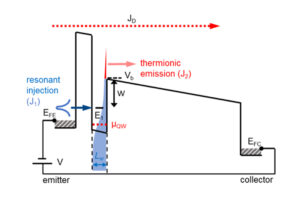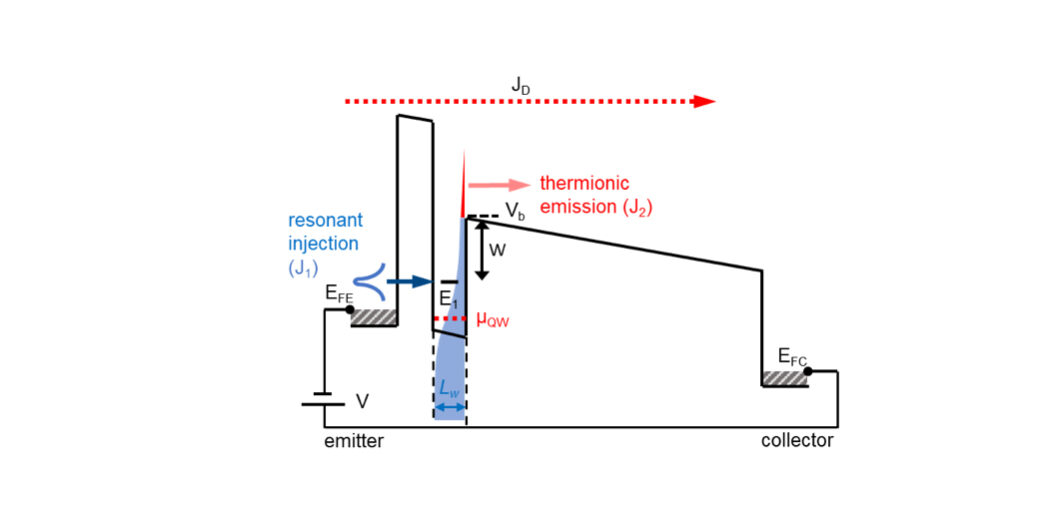We investigate electron transport in asymmetric double-barrier AlGaAs/GaAs thermionic cooling heterostructures (Fig.1). Measurements of temperature-dependent current-voltage characteristics confirm that the dominant electron transport is a sequential process of resonant tunneling injection into and thermionic emission from the quantum-well (QW) cooling layer. The thermal activation energy of the current is found to be strongly dependent on the bias voltage. Furthermore, instead of showing a simple thermal activation behavior, the current exhibits rather complicated temperature and voltage dependence, particularly when the thermionic emission barrier is low. To establish a quantitative understanding, we develop an intuitive analytical model for sequential electron transport that explicitly takes into account scattering effects in the thermionic emission process from the two-dimensional QW states to the three-dimensional above-barrier states. The observed temperature-dependent sequential current is well explained by the present theory
 Fig. 1: Band diagram of the asymmetric double barrier thermionic cooling heterostructure. Electrons are injected from the emitter electrode into the quantum well through the thin and tall emitter barrier (blue arrow) by resonant tunneling (J1) and are extracted to the collector by the thermionic emission above the thicker barrier (red arrow) (J2). EFE and EFC are the Fermi levels in the emitter and collector electrodes, respectively. W is the energy difference between the quantized energy state, E1, and the collector barrier height, Vb. Lw is the thickness of the QW. is the quasi-Fermi level in the QW. The current that directly goes from the emitter to the collector (JD; red dotted arrow) does not contribute to cooling and we will not discuss it in this work.
Fig. 1: Band diagram of the asymmetric double barrier thermionic cooling heterostructure. Electrons are injected from the emitter electrode into the quantum well through the thin and tall emitter barrier (blue arrow) by resonant tunneling (J1) and are extracted to the collector by the thermionic emission above the thicker barrier (red arrow) (J2). EFE and EFC are the Fermi levels in the emitter and collector electrodes, respectively. W is the energy difference between the quantized energy state, E1, and the collector barrier height, Vb. Lw is the thickness of the QW. is the quasi-Fermi level in the QW. The current that directly goes from the emitter to the collector (JD; red dotted arrow) does not contribute to cooling and we will not discuss it in this work.
Ref : X. Zhu, M. Bescond, T. Onoue, G. Bastard, F. Carosella, R. Ferreira, N. Nagai, and K. Hirakawa, “Electron transport in double-barrier semiconductor heterostructures for thermionic cooling,” Phys. Rev. Appl., 16, 064017 (2021). https://doi.org/10.1103/PhysRevApplied.16.064017







